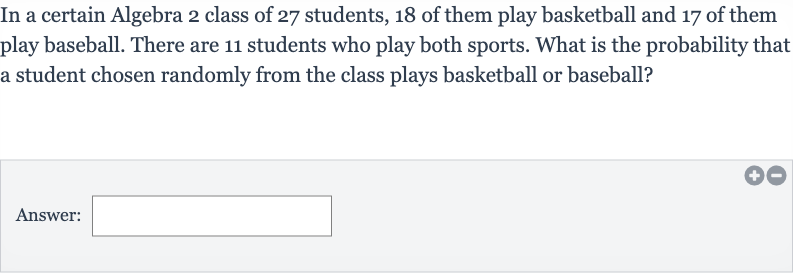AI tutor
Welcome to Bytelearn!
Let’s check out your problem:

In a certain Algebra class of students, of them play basketball and of them play baseball. There are students who play both sports. What is the probability that a student chosen randomly from the class plays basketball or baseball?Answer:
Full solution
Q. In a certain Algebra class of students, of them play basketball and of them play baseball. There are students who play both sports. What is the probability that a student chosen randomly from the class plays basketball or baseball?Answer:
- Use Inclusion-Exclusion Principle: To find the probability that a student plays basketball or baseball, we need to use the principle of inclusion-exclusion. The formula for the probability of or is .
- Calculate : First, we calculate the probability of a student playing basketball.
- Calculate : Next, we calculate the probability of a student playing baseball.
- Calculate : Then, we calculate the probability of a student playing both basketball and baseball.
- Apply Inclusion-Exclusion Principle: Now, we apply the principle of inclusion-exclusion to find the probability of a student playing basketball or baseball...
- Simplify the Expression: We simplify the expression to find the final probability...
- Final Probability: Finally, we can simplify the fraction by dividing both the numerator and the denominator by their greatest common divisor, which is .
More problems from Probability of simple events
QuestionGet tutor help
QuestionGet tutor help
QuestionGet tutor help
QuestionGet tutor help
QuestionGet tutor help
QuestionGet tutor help
QuestionGet tutor help
QuestionGet tutor help
QuestionGet tutor help
